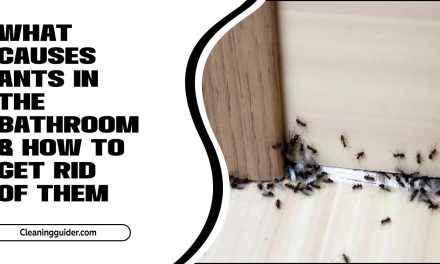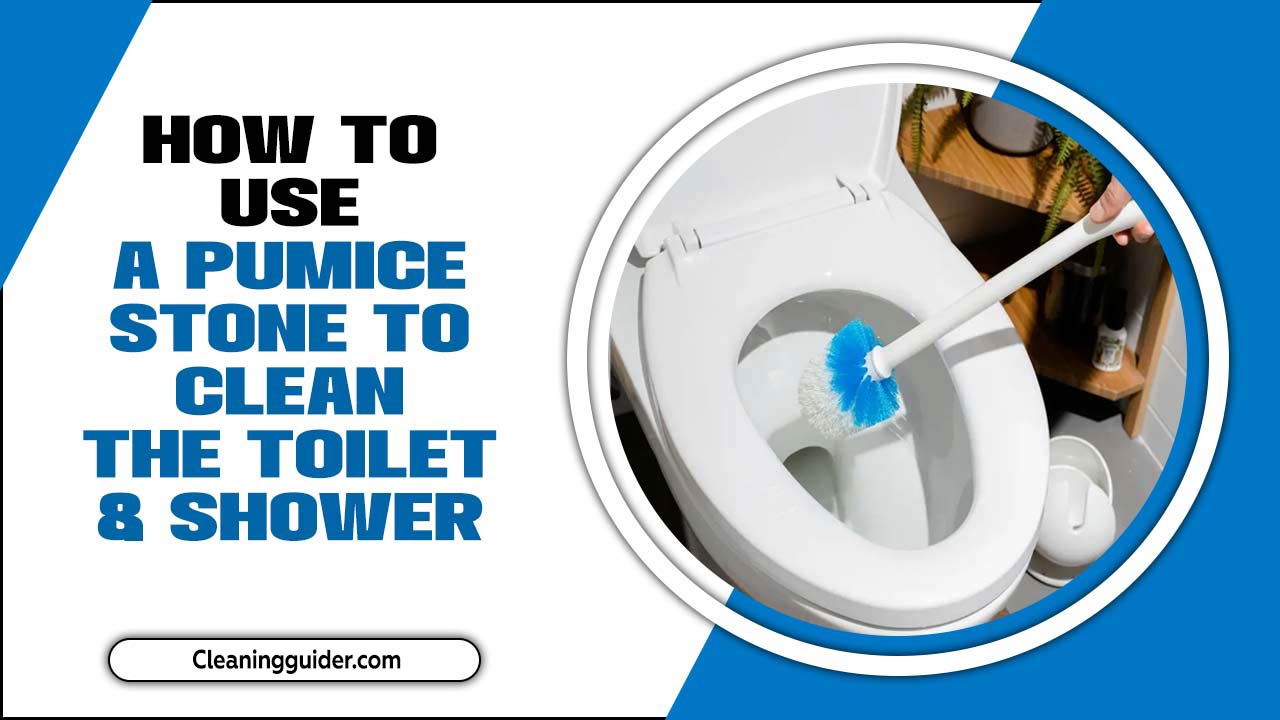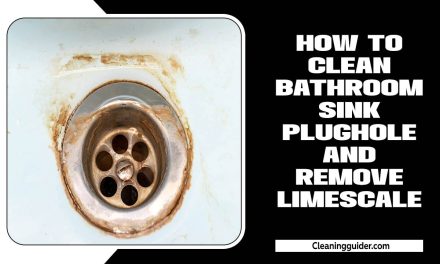Carpet is a popular choice for flooring in many homes, providing a soft and cozy surface for daily use. However, accidents are bound to happen, and when it comes to lily pollen stains, they can be particularly troublesome to remove.
The bright yellow-orange pigment of lily pollen can easily transfer onto carpets, leaving behind unsightly marks that can be challenging to eliminate. This is especially true during the spring and summer months when lilies are in bloom and more likely to come in contact with carpets.
But fear not; removing lily pollen stains from your carpet doesn’t have to be a daunting task. How to remove lily pollen stains from carpet We will explore various methods and techniques to effectively remove lily pollen stains from carpets. We’ve covered you, from common household items to professional cleaning solutions.

What Are Lily Pollen Stains?
Lily pollen stains are common for homeowners with lilies in their gardens or floral arrangements. These stains occur when the vibrant yellow pollen from the lilies comes into contact with surfaces such as carpets. Lily pollen stains can be challenging to remove because the pollen is powdery and can easily spread and become embedded in the carpet fibers.
It is important to act quickly when dealing with lily pollen stains to prevent them from setting and becoming permanent. By following the right cleaning techniques and using the appropriate products, you can effectively remove lily pollen stains and restore the appearance of your carpet.
How To Remove Lily Pollen Stains From Carpet? 8 Steps
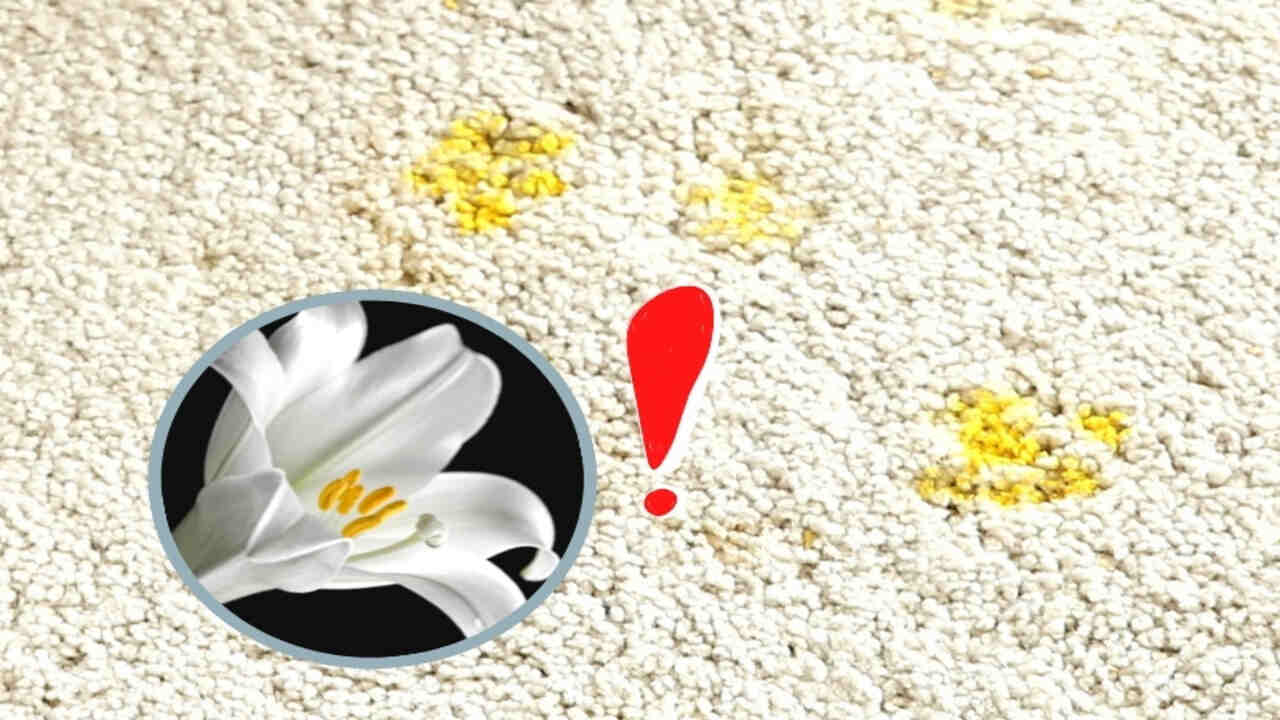
Removing lily pollen stains from carpet can be challenging, but with the right approach, it is possible to restore your carpet to its original condition. By following these steps and acting quickly, you can effectively remove lily pollen stains from your carpet and keep it looking fresh and clean. Here are 8 steps to help you effectively how to remove lily pollen stains from carpet:
Step 1:Vacuum The Carpet
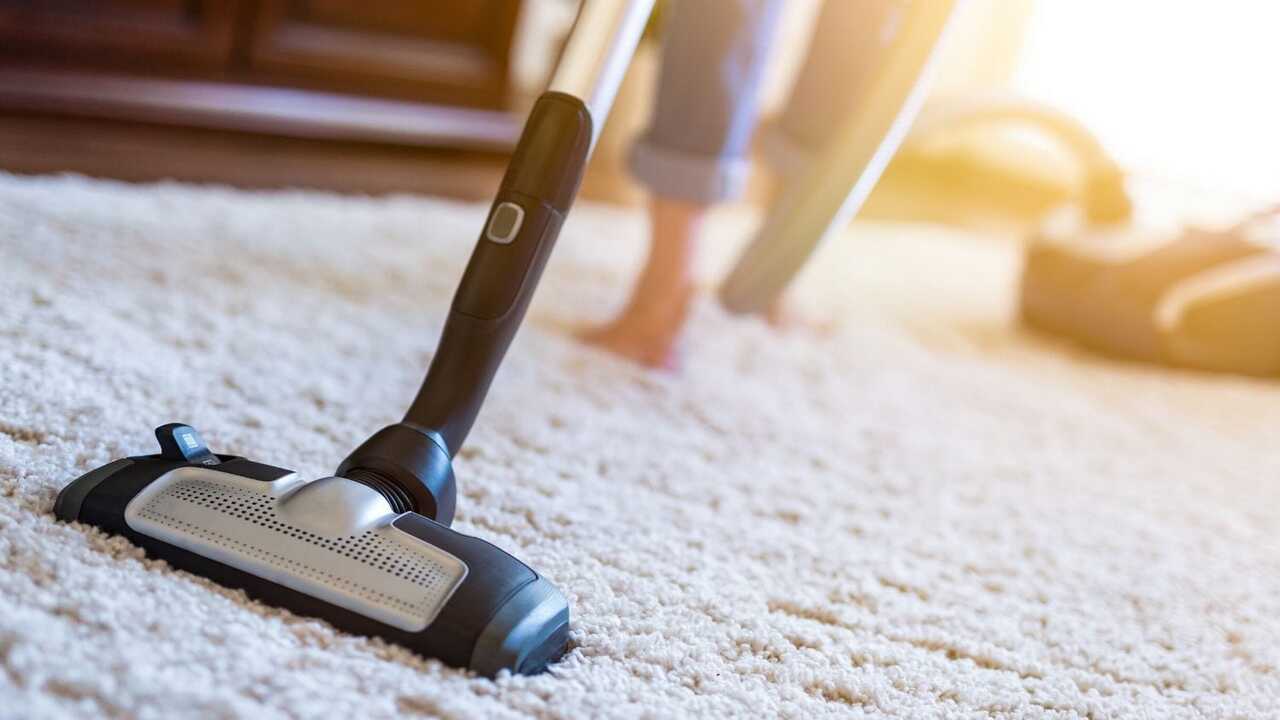
To begin the stain removal process, use a vacuum cleaner to remove loose pollen from the carpet fibers. This is an important first step in effectively eliminating lily pollen stains. Thoroughly vacuum the carpet, targeting areas where the pollen is most visible.
You can remove any remaining loose pollen by using a clean cloth or a lint roller. Vacuuming the carpet will help prevent the pollen from embedding deeper into the carpet fibers, making the stain-removal process much easier.
Step 2:Blot The Stain
It’s important to act quickly when dealing with a lily pollen stain on your carpet. The first step is to gently blot the stain with a clean white cloth or paper towel. Avoid rubbing the stain, as this can cause it to spread further into the carpet fibers. Instead, dab at the stain to absorb as much pollen as possible.
Be careful not to press too hard, as this can push the stain deeper into the carpet. Once you have blotted up as much of the pollen as possible, proceed to the next steps for effectively removing the stain from your carpet.
Step 3:Make A Cleaning Solution
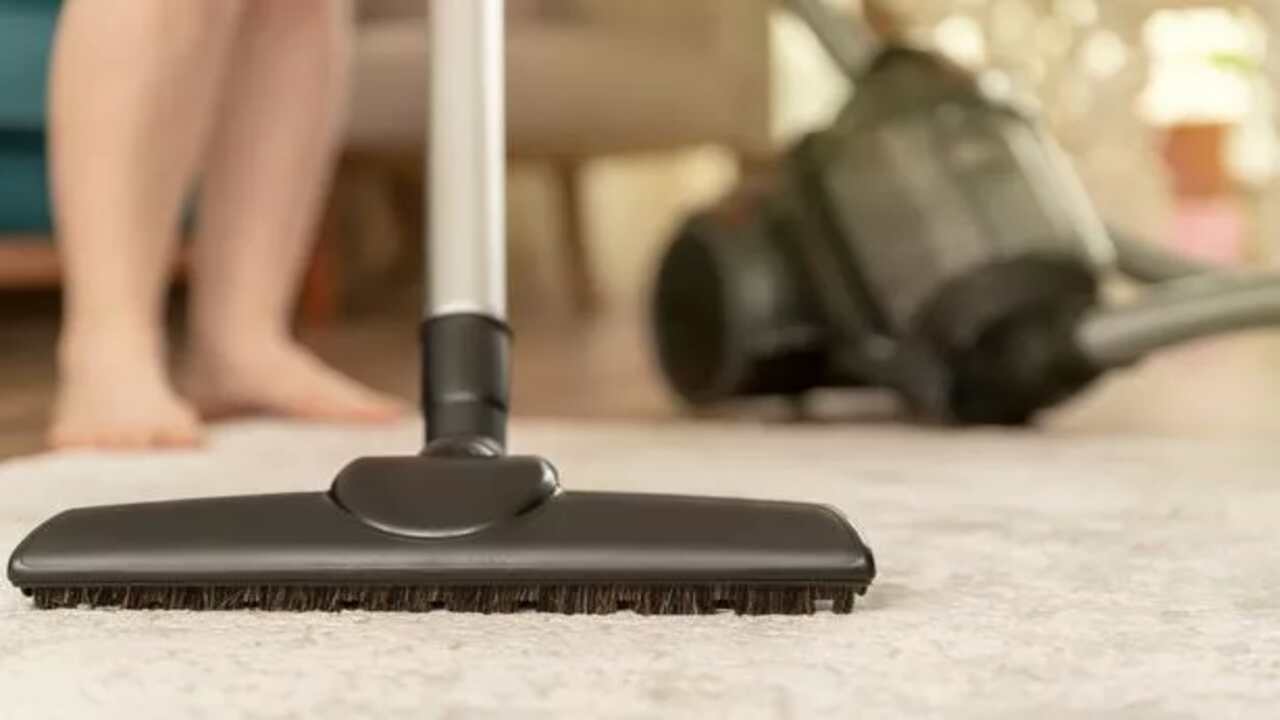
You can create a simple cleaning solution using common household ingredients to remove lily pollen stains from your carpet. Mix one teaspoon of dishwashing liquid in a bowl with one cup of warm water. Gently stir the mixture until it is well combined. Then, dip a clean white cloth or sponge into the cleaning solution.
Blot the stained area of the carpet with a cloth or sponge, being careful not to rub or scrub too vigorously as this can spread the stain further. Continue blotting until the pollen stain is lifted from the carpet.
If necessary, repeat this process using a fresh cleaning solution until the stain is completely gone. Once the stain is removed, rinse the area with clean water and blot dry with a clean towel. It’s important to act quickly when dealing with lily pollen stains to prevent them from permanently setting into the carpet fibers.
Step 4:Test The Cleaning Solution
Before applying the cleaning solution, testing it on an inconspicuous carpet area is important. Always start by testing the cleaning solution on a small, hidden section to prevent potential damage or discoloration. This step ensures that the cleaning solution is compatible with the carpet and won’t cause any adverse effects.
It’s best to test the solution on a small, inconspicuous area first to ensure its effectiveness and safety. By taking this precautionary measure; you can proceed confidently in treating the stained item without any worries.
Step 5:Apply The Cleaning Solution
To remove lily pollen stains from your carpet, gently apply the cleaning solution using a clean cloth. Cover the entire stained area and gradually saturate it with the solution. Carefully remove any remaining loose pollen stain using a soft brush or a lint roller.
It’s important to avoid rubbing or scrubbing the stain, as this can push the pollen deeper into the carpet fibers. By applying the cleaning solution in a controlled manner, you can effectively treat and remove lily pollen stains from your carpet.
Step 6:Blot The Stain Again

After applying the cleaning solution, gently blot the lily pollen stain with a clean cloth. This ensures that any remaining pollen particles are removed from the stained carpet fibers. Repeat blotting the stain with a clean cloth to achieve the best results. By doing so, you’ll effectively eliminate the dusty substance and prevent any further staining. Use a white cloth to avoid transferring dye or lint onto the carpet.
Step 7:Rinse The Carpet
To ensure the carpet is completely free from residue, gently dab it with a damp cloth to rinse the cleaning solution. This step is crucial in removing any remaining traces of the solution and preventing it from leaving behind a stained area.
Using a damp cloth, you can effectively rinse the carpet and remove all parts of the water and cleaning solution. Take your time during this process to thoroughly rinse the carpet and eliminate any potential staining. Remember, the goal is to leave the carpet clean and spotless.
Step 8:Let The Carpet Dry
After completing the previous steps to remove lily pollen stains from your carpet, it’s crucial to let it dry properly. This step ensures the cleaning process is fully effective and prevents potential damage. Allow the carpet to air dry completely without placing furniture or stepping on it. Patience is key here. Give the carpet enough time to dry naturally, undisturbed by foot traffic or objects. Once the carpet is fully dry, you can safely resume normal use.
Recommended Products For Removing Lily Pollen Stains From Carpet

When it comes to removing lily pollen stains from carpet, there are a few recommended products that can help. Remember to test any product or solution on a small, inconspicuous area of your carpet before applying it to the stain to ensure it does not cause any damage or discoloration. Additionally, always follow the manufacturer’s instructions when using any cleaning product. Here are some options to consider:
- Stain Remover Sprays: Look for a stain remover designed to remove pollen stains. These sprays often contain enzymes that break down the pollen and make removing it easier.
- White Vinegar: Mix white vinegar and water equally and apply them to the stain. Let it sit briefly, then blot with a clean cloth.
- Liquid Dish Soap: Mix a small amount of liquid with warm water and dab it onto the stain. Blot gently until the stain is removed.
- Rubbing Alcohol: Apply rubbing alcohol to a clean cloth and blot the stain until it lifts.
Conclusion
To sum up, removing lily pollen stains from your carpet requires a systematic approach. Follow the steps mentioned above to effectively eliminate the stains and restore the cleanliness of your carpet. Remember to vacuum the carpet, blot the stain, make and test a cleaning solution, apply it to the stain, and repeat the blotting process.
Rinse the carpet and allow it to dry thoroughly. Additionally, using recommended products specifically designed for removing lily pollen stains will yield better results. Always test any cleaning solution on a small, inconspicuous area first and seek professional help if you are unsure or if the stain is particularly stubborn. With patience and persistence, your carpet can be stain-free once again. We hope you now understand how to remove lily pollen stains from carpet.
Frequently Asked Questions
1.How Do You Get Rubbed Lily Pollen Stains Out Of Carpet?
Ans: To remove rubbed lily pollen stains from carpet, avoid rubbing the stain. Instead, use a vacuum cleaner or tape to remove loose pollen. Blot the stain with a mixture of cold water and dishwashing liquid. Rinse with cold water and air dry. If the stain persists, try a carpet stain remover.
2.How Do You Get Yellow Pollen Stains Out Of Carpet?
Ans: To remove yellow pollen stains from carpet, start by vacuuming the affected area to remove as much pollen as possible. Then, mix water and white vinegar and blot the stain with it. Apply a carpet cleaner or dish soap solution, let it sit for 10-15 minutes, rinse with clean water, and blot dry with a cloth.
3.Will Lily Pollen Stains Come Out Carpet?
Ans: Yes, lily pollen stains can be removed from carpet if treated properly. Avoid rubbing the stain; instead, gently blot with a clean cloth. Use a mixture of water and dish soap, or try a commercial carpet cleaner. If the stain persists, consider calling a professional cleaning service.
4.How To Remove Lily Pollen Stain From Wood?
Ans: Avoid using water to remove lily pollen stains from wood, as it may damage the surface. Instead, use a dry cloth or vacuum cleaner to remove as much pollen as possible.
5.How To Get Lily Pollen Out Of Clothes Will Tumble Drying Remove Pollen?
Ans: Is tumble drying an effective method to remove lily pollen stains from clothes? Learn the best techniques for removing lily pollen stains from your garments without damaging them. Find out if tumble drying can successfully eliminate pollen stains.

